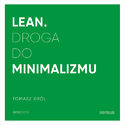Table of Contents
Preface (Artur Kijak, Andrzej M. Łęcki, Jerzy Nykiel) / 5
List of publications by Rafał Molencki / 7
Tabula gratulatoria / 13
Jerzy Wełna: From Raphael to Rafał, or a partly linguistic potpourri: An anniversary essay / 17
Part One: Medieval English Syntax
Artur Bartnik: Resumptive pronouns and asymmetric coordination in Old English / 35
Magdalena Bator, Marta Sylwanowicz: “Once you see it, once you don’t” – The case of null objects in Middle English culinary and medical recipes / 51
Anna Cichosz: Verb-initial main clauses in Bede: A translation effect? / 68
Ursula Lenker: Pathways of change of English there / 90
María José López-Couso, Belén Méndez-Naya: The declarative complementizer how in the long diachrony / 109
Andrzej M. Łęcki: On the evolution of adverbial subordinators expressing negative purpose in
English: The case of weald / 129
Janusz Malak: Expletives in Old English and the structure of the Old English clause / 140
Ilse Wischer: On the use of the pre-modal mćg in Old English /159
Anna Wojtyś: The role of syntactic factors in the elimination of *ţurfan from English / 176
Part Two: Semantics, Lexis, Translation
Magdalena Charzyńska-Wójcik: To translate is human, to explain – divine / 195
Ewa Ciszek-Kiliszewska: Dynamics of use of the Middle English preposition bitwix(e) / 214
Radosław Dylewski, Tomasz Kopycińsk: A study of dude’s earliest semantics and its geographical distribution on the basis of Chronicling America: Historic American Newspapers / 227
Joanna Kopaczyk, Bettelou Los: Referential functions of there+P pronominal adverbs in Older Scots / 254
Hans Sauer: Milton’s binomials and multinomials in Samson Agonistes / 275
Part Three: Phonology
Ondřej Tichý, Jan Čermák: Consonant cluster reduction and change of language type: Structural observations on phonotactic modification from Old to Middle English / 307
Artur Kijak: Labial-velar changes in the history of English and Netherlandic / 327

